Here is a retelling of the Hopi story, The Revenge of the Katcinas (Kachinas or Katsinam). To grow crops and survive in their mountainous desert, the Hopis understand the necessity for proper devotion to the supernatural powers, known as the Kachinas, who embody the spirits of living things and also of ancestors who have died and become a part of nature. When the people fall out of favor with the supernaturals, disaster results.
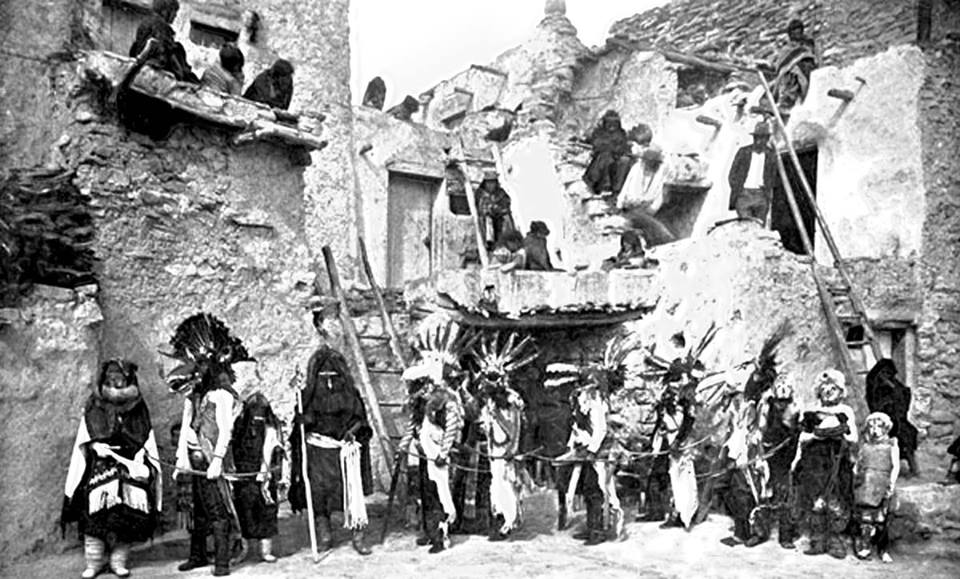

THE REVENGE OF THE KATCINAS
A Hopi Legend, Retold by Pûhû’nömtiwa (Oraíbi)
Halíksai! This place, Kaö’tûkvi, is somewhere east of the Pueblo Indians, and a long time ago many people lived there. West of them was a large mountain like the San Francisco Mountains (near Flagstaff, Arizona). In these mountains lived many Katcinas.
Those people sometimes had ceremonies (híhta totók’a yû’ngwa), but they did not yet know the Katcinas. One time some of the Katcinas also assembled in their kiva in the mountains, and dressed up, getting ready for a dance. They then descended and came to the village in the night, where they commenced to dance on the plaza.
The people were still sleeping, but soon heard the noise of the dance and arose and came to the Plaza. Here they saw the Katcinas dance. The latter, however, did not accompany their dance by singing. By the side of the line of dancers danced a Katcina Uncle (Katcina Táha).
The people, not knowing what or who the dancers were, became angry and concluded among themselves that they wanted to kill them. The Katcinas heard what the people said about wanting to kill them and ran away.
West of the village they jumped from a bluff into a large crack. These were the Snow (Nûva) Katcinas, the Uncle being a Hotóto Katcina. The Katcina Uncle was in the lead when they jumped in the crack.
Here the people who had followed them set fire to them and burned them up.
The Katcina Uncle who was at the bottom was not burned. Early in the morning he crept out and returned home to the mountains, singing the following song as he walked along:
Tanayo, tanayo,
Kayohatii! kayahatii!
Tanayo, tanayo, tanayo, tanayo
Kayohatii! kayahatii!
Nahanahay, Hotóto, palaka.
I myself (the) Hotóto emerged.
[The meaning of this line only could be ascertained.]
Shiwana towitowi ahaha (a) cloud.
Towiwikaliyoyokana yaaahihi h- h-; h-
Towiwikaliyoyokanayaaahihi h- h- h-
[The “h,” with a rising inflection to imitate sobbing.]
The Katcinas living in the mountains had fields at the foot of the mountains where they were planting corn and watermelons. Here the Hehéa was hoeing with a wooden hoe (wík’a), still used by the Hehéa Katcinas in their dances.
It was early in the morning. All at once he heard somebody singing, raised his wík’a and listened, but just then the singing stopped. The Katcina again commenced to hoe, and again heard the singing. Listening again he heard the singing and the sobbing and behold, somebody was walking along crying.
When the Hotóto arrived at the Hehéa Katcina the latter asked: “Why are you walking along saying something and crying ‘Yes?”’ The Hotóto replied, “We were there in the Hopi village dancing, then they came out and threatened to kill us, so we ran away and jumped into the gulch west of the village, and there we were piled up, and all were burned up by the Hopi except myself. I had jumped in first and was not burned and escaped unharmed. That is the reason why I was moaning as I went along.”
The Hehéa Katcina then also commenced to moan as follows:
Ochitana, iyawa, iyava
Ochitana! iyava, iyava.
Alas! (This is the only word of which meaning could be obtained.)
Hininiya ihihi io hiiohiio, h- h- h- h-.
Hereupon they both went home into the mountain where there were a great many Katcinas, men, women, youths, and maidens.
“Why do you come alone?” they asked the Hotóto.
The latter hereupon repeated what he had said to the Hehéa Katcina. “We shall sometime take revenge,” said the chief of the Katcinas, and ordered the Katcinas to assemble and to dress up.
Hereupon they made it hail for three days.
Early in the morning of the fourth day they caused a cloud to rise which hovered over the mountains. This was their emblem or standard (nátsi); it was a very beautiful cloud. Then the Katcinas ate their morning meal.
The people in the village saw the cloud. They had gone to their fields early in the morning for they had many fields around the village. After breakfast many more clouds began to rise above the mountains, towering upon each other. They soon spread out and during the afternoon they covered the sky, coming up from all four sides. The corn of the Hopi had at this time begun to mature and the people felt very happy over the clouds.
They expected that they would have a good rain now. Towards noon it began to thunder and to rain in the mountains and the clouds began to move towards the Hopi village.
When they had arrived there it was thundering and lightning and it rained great hailstones. All the crops were destroyed, and even the people, although they left their houses and fled to the kivas, were killed. Only one man and one woman remained alive.
When everything had been destroyed, the clouds said: “We will stop now and return,” and then they began to disperse in all directions, some of them returning to the mountains.
The Katcinas were then happy saying, “Now we have revenged ourselves, let it be thus.”
The woman that had been spared again bore children and the village was by and by again inhabited.
STORY: Soyal Ceremony: Hopi Kachinas Dance at Winter Solstice
httpvh://youtu.be/nXti6mC9pKw
Hopi: People of Peace (Part 1), Narrator – Ian Jacob Thompson, Research & Written by J.T. Guardalabene, Graphics by Darley Clark
Since time immemorial the Hopi people have lived in Hopituskwa and have maintained their sacred covenant with Maasaw, the ancient caretaker of the Earth, to live as peaceful and humble farmers respectful of the land and its resources. The Hopi are the westernmost of the Ancient Pueblo peoples and their homeland makes up twelve villages set on the three mesas in northeastern Arizona. These are called First Mesa, Second Mesa and Third Mesa in order of their access from the east.
Kachinas are spirits or personifications of things in the real world. These spirits are believed to visit the Hopi villages during the first half of the year. A kachina can represent anything in the natural world or cosmos, from a revered ancestor to an element, a location, a quality, a natural phenomenon, or a concept.
To grow crops, particularly corn in their semiarid land, the Hopis believe in a reverent giving of prayer feathers, corn pollen, and various rituals in exchange with the supernaturals for good weather, and protection from dangerous forces.
Source:
H.R. Voth: The Traditions of the Hopi, Field Museum Anthropological Publications. Vol. XI, No. 1 (Chicago, 1912)
H/T: Jos Diep



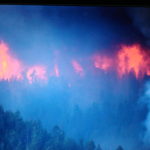
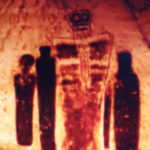
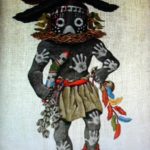
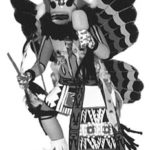
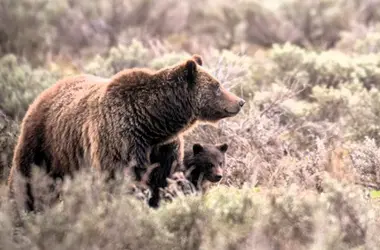
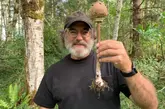
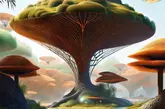



Pingback: Hopi Winter Solstice Tradition: Kachinas Dance at the Soyal | WilderUtopia.com
yall aint even hopi so ask a real hopi y they come ot our villages
Pingback: Dark Omen: Climate Chaos Converges with Solar Eclipse Wisdom
Pingback: Hopi Butterfly Dance: Ceremonial Gratitude - WilderUtopia